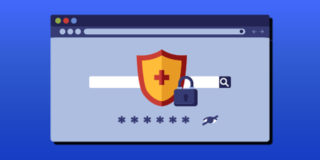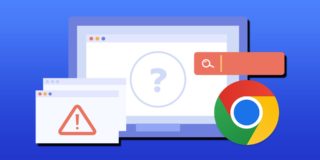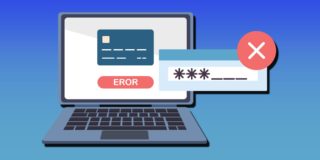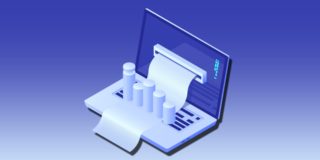Installing Ubuntu Linux!
Finishing the Installation
Next up, the installation will do some very exciting stuff including:
- Installing the Base System – your Linux kernel (the kernel is the lowest, most basic level of the operating system) and some essential libraries (remember, Linux libraries = Windows DLL’s)
- Copy and Install Packages to your Hard Drive – these packages include Open Office, The GIMP, and X (graphical window manager), among others
Once the copying portion is done, you will be asked for some more information. First up is your time zone. This is pretty simple. In my case, it’s Eastern. Next, it will ask for your name. Again, this is simple, just enter your first and last name. Up next, you will be asked for a login name. This can be anything you want except for “root”. The installation says your first name is a good choice, so I’m sticking with that. Finally, you will need to enter a password for your login and then confirm it. Make sure you remember the password!
Setting up the Dual Boot
Almost there, we are so close you can smell the finish line. Just one thing left, setting up the dual boot. After the install configures “apt” (Ubuntu’s installation package manager) you will see a message along the lines of “Loading GRUB”. Wait a few more seconds and then presto, a message pops up stating any addition operating systems you have, in my case it’s Windows XP Professional.
The installation program is now going to configure the GRUB boot manager program. Once configured, GRUB will present you with a menu when your computer boots asking which operating system you would like to load. In my case the menu options would be “Ubuntu Linux” and “Windows XP Professional”. The Ubuntu Installer is Windows friendly, so answer yes to install GRUB to the master boot record. Everything will magically be taken care of.
Rebooting Into Linux!
Now where were we? Oh yes, the part about being done. Your CD should have ejected by now, so pull it out of your drive, bask in the glory of the “First Stage Complete” notice and reboot!
Once you reboot, you will notice you now have a menu asking you which operating system you want to load. This is the GRUB program. As you can see, I am asked to load either Ubuntu Linux or Windows XP Professional. Since we have a new and exciting Linux install, let’s boot to Ubuntu.
Are you ready to see your new Linux desktop? Well, you are going to have to wait a bit longer. The installer needs to finish configuring your system. It will probably take 10-15 minutes, but you can sit back and relax as you don’t have to press any buttons. So go ahead and grab yourself some coffee and ponder about what you are going to do with your new operating system. Run a web server? organize your music and DVD library? do some programming or website development? Set up a workstation? Edit some video’s? I could go on, but the configuration is just about done. Yes, it’s finally time!
Entering Ubuntu for the First Time
See the login screen? Just enter your user name and password from above and you are in! Congratulations and welcome to Ubuntu Linux!
If everything went well, you should hear some music play when you log in and have your screen resolution set correctly (if not, I will show you how to fix it in the next section). Ubuntu uses a graphical manager called GNOME, which is quite intuitive and user friendly. It may look awkward at first, but it grows on you. The menu in the top left which has “Applications”, “Places”, and “System” resemble what your Windows Start menu would have. They let you easily launch applications and configure your system. Play around with it for a minute, you’ll see.
When you first entered your Ubuntu desktop, you may have noticed a little red icon at the top which is notifying you of updates. This is just like the Windows updates, except better. You will get an update notice not only for operating system updates, but for every application and library you have installed on your system. No need to check for any program updates… let Ubuntu do check and install the updates for you!
My Screen Resolution is Wrong!
The only glitch I have experienced in one of my Ubuntu installs is the installation program not detecting my screen resolution correctly. This is easily fixed, so if it happens to you, try this:
- Launch a Terminal window by going Applications > Terminal
- Type this at the command prompt:
sudo gedit /etc/X11/xorg.conf
- Find the text:
Section "Monitor"
- Create the entries for “HorizSync” and “VertRefresh” each on a separate line with the values corresponding to your monitor.
For example, I have a generic 17 inch monitor at 1024×768 and my section looks like this:Section "Monitor"
Identifier "HWP" # this is my monitor name
Option "DPMS" # default options, leave these alone
HorizSync 28-60 # horizontal refresh frequencies
VertRefresh 43-60 # vertical refresh frequencies
EndSection - Reboot your computer and your resolution should be all set
Enter My Password?
While you are configuring your system, you may be prompted by a box asking for your password. This is normal, and a very good thing. Because the user you logged in as does not have administrator, or root, access to install programs, Ubuntu has to launch the configuration/install utilities as the user who does, root.
Why don’t you just log in as root then? Glad you asked. It’s simple, to protect you from yourself. Let’s use a Windows analogy to demonstrate why this is a good thing. We all know spyware and viruses are a problem with Windows. You probably have anywhere from 2-5 programs installed on your computer to prevent or detect them, as they install themselves without you knowing. How do they do this? Well, because in Windows when you are logged in, most likely you have administrative access to your system, and as a result, so does any program you start. So when you launch Internet Explorer and visit a malicious site, anything this site runs is with administrative access. Now take a novice computer user, apply this example and add to the mix email, programs, and install files and you can see how running as administrator (or in Linux, root) can lead to having an infested system. In Ubuntu, the only way programs can install themselves or modify your system files is if you know about it, hence the prompt for your password.
Enough of that… you really won’t see the prompt much as your login can run all programs once they are installed, and you can rejoice in not having to worry about spyware or viruses in Linux.

















30 thoughts on “Installing Ubuntu Linux!”
I go to there and i hav no idea how to ‘pop in my spare hd’… Exactly, wat u mean by that?? Make it bootable??
One more thing, my comp now has partition C and D. I install xp in C but most of the files r in D. Lets say i install ubuntu in D, will it erase my other files?? *my D partition has 70GB*
That means you should have an external HD which you plug into your USB port. When computer recognizes this you can make this bootable in Ubuntu.
>One more thing, my comp now has partition C and D. I install xp in C but most of the files r in D. Lets say i install ubuntu in D, will it erase my other files?? *my D partition has 70GB*
Ubuntu will make another partition if you wish.
barry
I have installed windows xp service pack-2 in C drive and now i want to install ubuntu 9.04 in partition G [total memory space is 20 GB] now problem is i have important data in remaining partition D, E and F. If i install ubuntu in partition G…will my data be lost? I want to dual boot my system.
Please help me.
!! i tried to do whatever but it seems little bit non friendly ..i cant manage till now ..do you have suggestions ?
!! i tried to do whatever but it seems little bit non friendly ..i cant manage till now ..do you suggestions
if you have your windows vista installed…install your linux fresh.. reboot pc with linux cd in cd player and install from there , not from inside windows
like…
make sure you have 7 partitions (haha)
install 98 from cd on bootup
then install 2000 from cd on bootup
then install xp from cd on bootup
then install server 2003 from cd on bootup
then instal vista from cd on bootup
then install windows 7 cd on bootup
then install ubuntu from cd on bootup and import all off above (it will ask you)
then when you bootup you will have the choice of ubuntu or longhorn
if you choose ubuntu it will boot to ubuntu, if you choose longhorn it will take you to a screen where you have to choose vista, win 7 or older …if you choose older you have the choice of 2000 xp and 98
best of luck
b
Think about having only one large container; how do you put two different types of fluid in there without having them mix? For the purpose of the illustration, you put a divider in the container, so whatever you put in the sectioned off part of the container, wont mix with the rest of the containers’ contents.
Thats what partitioning a hard drive means. You section off part of your hard drive so you can do whatever you want with it, and it wont mess up (or mix) with the rest of the hard drives contents.
You’re tips on how to partition single drive for dual-booting helps me make my way to hassle free installation and a better computing machine.
Many thanks!
Jose
It seems to be a common issue with ACPI or APIC or whatever the acronym is.
On Ubuntu 8.10 the keys to choose boot options are F6, and turn off the api and lapic options.
This worked for me.
WHAT DO I DO HELP?
There you will be asked to activate which drivers. Make sure to update the system first though, as I had some problems activating my video card drivers before updating system (to update system goto System>Administration>Update Manager).
Before choosing the option “Install Ubuntu” press F4 and choose “safe video driver” option